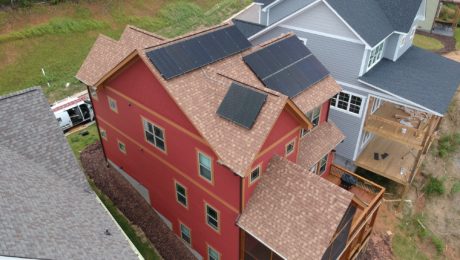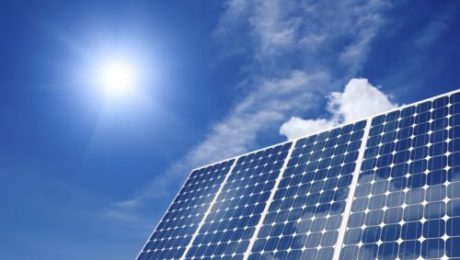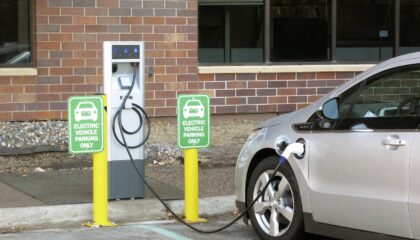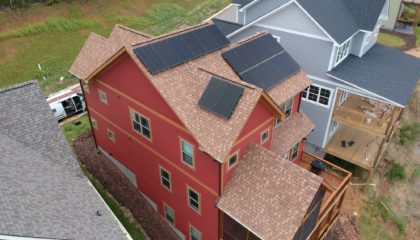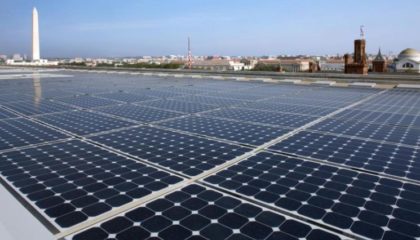How North Carolina Homeowners Can Benefit from Duke Energy’s Net Metering Program
In the quest for a sustainable future, renewable energy stands at the forefront of solutions combatting climate change and fostering energy independence. For North Carolina residents, the opportunity to contribute to this green revolution is accessible through Duke Energy’s Net Metering Program. This initiative allows homeowners to generate their clean energy and receive financial benefits for the surplus power they supply back to the grid. Here’s how the program works and why it might be the perfect time to consider going solar with SolFarm Solar Co.
What is the Net Metering Program?
Net metering is a billing mechanism that credits solar energy system owners for the electricity they add to the grid. For residential customers in North Carolina, this program is a gateway to becoming part of the renewable energy landscape. Whether harnessing the sun’s power, embracing the wind, or turning biomass into energy, participating in this program can significantly reduce your electricity bills and carbon footprint.
Key Benefits of the Net Metering Program
One of the primary advantages of the Net Metering Program is the financial incentive. Participants are credited for excess energy produced at the same rate typically purchased, which can offset the cost of energy pulled from the grid when production is low. This symbiotic relationship between homeowners and the utility company fosters a greener environment and promotes energy independence and economic savings. Moreover, by investing in renewable energy, participants contribute to local job creation and reduce greenhouse gas emissions, positively impacting the community and the planet.
Qualifying for the Net Metering Program
To participate in the Net Metering Program, your renewable energy system must meet specific standards, including a cap on its size relative to your home’s energy needs. Due to annual capacity limits, the program operates on a “first-come, first-served” basis, emphasizing the importance of early application. SolFarm Solar Co. can guide you through the application process, ensuring your system meets all requirements and maximizing your investment’s return.
Charges and Credits Explained
Participants in the Net Metering Program will encounter two main types of financial adjustments: the Non-Bypassable Charge and the Net Excess Energy Credit. The Non-Bypassable Charge is a small monthly fee based on the capacity of your solar system, designed to cover the utility’s fixed costs. On the brighter side, the Net Excess Energy Credit rewards you for surplus power produced, benefiting your utility bill.
Example Scenarios of Net Metering Benefits
Scenario 1: Achieving a Balanced Energy Profile with Solar Panels
Suppose that during a sunny month, your solar panels are particularly efficient, producing more electricity than your household consumes. Specifically, your panels generate over 200 kWh beyond your household’s energy needs. Under Duke Energy’s Net Metering Program, this surplus energy is sent back to the grid, and you’re credited for this contribution at a rate of 3.40¢ per kWh, amounting to a $6.80 credit.
In the context of Duke Energy’s billing structure, these credits are applied directly to your account, reducing your monthly fixed costs. Typically, Duke Energy has a set amount for fixed costs to cover the grid maintenance and service availability, which could be considered a minimum charge for access to the utility service. For simplicity, let’s call this the “fixed costs” for your energy bill, which is $28.
Applying the $6.80 credit from your excess generation against the fixed costs, your adjusted bill for the month would now be $21.20 ($28.00 fixed costs—$6.80 in credits). This adjustment showcases how generating surplus energy contributes to a greener grid and directly benefits you by lowering the overall cost of your utility expenses for the month.
As per Duke Energy’s policy, it’s important to note that any credits earned for excess energy cannot be rolled over into the next billing period. Therefore, making the most of your solar investment involves balancing or slightly exceeding your energy consumption with production, ensuring you maximize the financial benefits of net metering while adhering to Duke’s billing practices.
Scenario 2: Using More Power Than Produced
During shorter days or when demand spikes, you consume more energy than your system can produce. In such cases, you draw power from the grid. If your solar system generated 400 kWh but used 500 kWh, you only pay for the net consumption of 100 kWh at a rate of $0.044 per kWh (roughly $4.40), about one-third of the typical rate you would pay.
SolFarm Solar Co.’s Role
At SolFarm Solar Co., we believe in empowering homeowners through renewable energy. Our team specializes in designing and installing solar energy systems tailored to your unique energy needs and goals. We navigate the intricacies of the Net Metering Program on your behalf, ensuring you reap the maximum benefits from your investment. From initial consultation to installation and beyond, we’re your partners in positively impacting your utility bills and the environment.
Consider Solar For Your Home Today
The Net Metering Program offers a win-win solution for North Carolina residents eager to embrace renewable energy. Participating can significantly reduce your electricity bills and contribute to a sustainable future for future generations. If you’re ready to take the next step towards energy independence and environmental stewardship, SolFarm Solar Co. is here to guide you through every phase of your renewable energy journey. Let’s harness the sun together and make North Carolina a beacon of green energy.
Frequently Asked Questions
Q: How do I know if my home qualifies for solar panels?
A: Factors such as roof space, orientation, shading, and energy consumption will determine your home’s suitability. SolFarm Solar Co. provides comprehensive assessments to evaluate your home’s potential for solar energy.
Q: Can I participate in the Net Metering Program with an existing solar system?
A: Yes, if your system meets the program’s standards and requirements, you can apply for the Net Metering Program to start receiving credits for the excess energy you produce. For more information, contact us at (828) 332-3003!
Q: What happens to my net metering credits at the end of the billing cycle?
A: Credits earned for excess energy are applied to future bills. Any remaining credits at the end of the program year can offset charges in subsequent months, maximizing the benefits of your solar investment.
Embracing renewable energy through the Net Metering Program is an environmentally conscious and financially savvy decision. With SolFarm Solar Co., you can seamlessly transition to solar power, ensuring a brighter, greener future for your home and the planet.
- Published in Solar Energy
Duke PowerPair Program’s Bright Opportunity for North Carolina Homeowners
The Duke PowerPair program is a beacon of innovation in renewable energy, specifically tailored for homeowners in North Carolina. Launching in the spring of 2024, this initiative is not just a financial incentive program; it’s a bold statement in the fight against climate change. It represents a significant shift towards sustainable living, allowing homeowners to contribute positively to the environment while reaping more affordable benefits of solar technology.
The Program’s Structure and Incentives
Duke PowerPair stands out for its generous financial incentives. Homeowners who choose to install solar panels and battery backup systems can receive rebates up to $9,000, depending on their level of investment in solar and storage capacity. This program is particularly appealing because it makes solar energy not only more accessible but also more affordable. Reducing the upfront costs of solar installation breaks down one of the biggest barriers homeowners face in adopting renewable energy solutions.
Environmental and Financial Benefits
The environmental impact of joining the PowerPair program is profound. Participants will directly contribute to reducing carbon emissions, a critical step in combating global warming. Moreover, the financial implications are equally enticing. Over time, the savings on energy bills can be substantial, and the increased value of their property is a bonus. This program isn’t just about immediate returns; it’s an investment in a sustainable future.
Two Paths to Solar Empowerment
What makes Duke PowerPair particularly appealing is the flexibility it offers. Cohort A is ideal for those who prefer more control over their energy usage and costs with a Time-of-Use rate. This option is perfect for homeowners who want to maximize their energy savings by adjusting their energy consumption patterns. Cohort B, where Duke Energy manages the battery, is suited for those who prefer a more hands-off approach but still want to benefit from the advantages of battery storage. This dual-path approach ensures that a broader range of homeowners can find a suitable option that aligns with their lifestyle and energy goals.
Navigating the Application Process
The application process for the Duke PowerPair program begins on May 10, 2024, and is designed to be straightforward and user-friendly. However, interested parties must act swiftly with the cap set at 6,000 homeowners. The program’s popularity might lead to a shift to a lottery system to ensure a fair selection process. Prospective participants should stay informed about the application details and prepare their documentation well to ensure a smooth application experience.
A Step Towards a Greener Future
The Duke PowerPair program offers more than just financial savings; it’s a step towards a greener, more sustainable way of living. By participating, homeowners in North Carolina can play a pivotal role in the transition to renewable energy, setting an example for communities nationwide. This program is not just about harnessing the sun’s power; it’s about empowering individuals to positively impact the environment and their community while also benefiting from economic incentives.
For those considering a shift to solar energy, the Duke PowerPair program is an opportunity worth exploring. It’s a chance to be part of a movement that’s beneficial in the short term and transformative in the long run.
If you’re ready to embrace a brighter, more sustainable future, the Duke PowerPair program is your gateway. Reach out to us at SolFarm Solar Co. for expert guidance and support. Our team is ready to assist you in understanding the program, evaluating your options, and taking the necessary steps to harness solar energy for your home.
- Published in Solar Energy, Solar News
Maximizing Your Savings: Understanding the Federal Solar Tax Credit
Solar energy isn’t just a smart choice for the environment – it’s also a savvy move for your wallet. The federal solar tax credit, a key financial incentive, has made the leap into solar energy more appealing and attainable for homeowners nationwide. This guide will explore the ins and outs of this tax credit, shedding light on how it works, who qualifies, and the steps you need to take to benefit from it. Understanding this credit can make a significant difference in your solar energy investment, ensuring that you contribute to a greener planet and optimize your financial returns.
What is a Tax Credit Anyway?
Let’s start with the basics. A tax credit is a reduction in the amount of taxes you owe. Unlike deductions, which lower your taxable income, credits are more advantageous as they directly reduce your tax bill on a dollar-for-dollar basis. Imagine you owe $3,000 in federal taxes and are eligible for a $1,000 tax credit; your tax bill drops to $2,000. It’s an effective tool to encourage certain investments, like solar energy, by easing the financial burden on taxpayers.
Shining Light on the Federal Solar Tax Credit
The federal residential solar energy credit is not just another tax incentive; it’s a substantial financial benefit for homeowners who adopt solar technology. This credit allows individuals to claim a specific percentage of the total cost of their solar photovoltaic (PV) system on their federal income taxes. The percentage of the credit depends on when the system was installed. For instance, systems installed in 2020 and 2021 are eligible for a 26% credit, while those installed between 2022 and 2032 can claim a 30% credit. However, it’s essential to note that this generous incentive only lasts for a while. After 2032, the credit decreases and eventually phases out by the end of 2035. This timeline creates a sense of urgency for homeowners contemplating solar power, emphasizing the need to act sooner rather than later to maximize their financial benefit.
Eligibility: Who Can Soak Up the Sun?
Determining eligibility for the solar tax credit is straightforward but crucial. First, your solar PV system must have been installed between January 1, 2017, and December 31, 2034. It’s also important that the system is located at a residence in the United States and that you own it. Ownership can be direct, such as purchasing it outright or through financing, or indirect, like buying an interest in a community solar project. However, if you’re leasing the system or simply buying electricity from a community solar project, you won’t qualify for the credit. These eligibility criteria aim to ensure that the tax credit benefits are directed toward individuals who have invested directly in solar energy.
Covered Costs: What’s Included?
The range of expenses that qualify for the tax credit is quite comprehensive, which is excellent news for homeowners. These expenses include the cost of solar PV panels, contractor labor for onsite preparation, assembly, or original installation, and necessary balance-of-system equipment such as wiring, inverters, and mounting gear. Additionally, energy storage devices with a capacity of 3 kilowatt-hours or more, installed after December 31, 2022, are eligible. It’s important to note that these devices must still meet the installation date requirements for the credit. Even the sales taxes on these eligible expenses can be included, further increasing the financial benefits of going solar.
Balancing Other Incentives with the Federal Credit
Understanding how the federal solar tax credit interacts with other incentives is crucial for accurately calculating your potential savings. Generally, utility rebates for solar installation are subtracted from your system costs before you calculate your tax credit. This ensures that the credit is calculated based on your net investment in the system. On the other hand, payments received for renewable energy certificates, often considered taxable income, do not reduce your federal tax credit. State government rebates usually don’t reduce your federal tax credit either. This complex interplay of incentives underscores the importance of careful calculation to maximize your benefits.
Navigating Special Cases
The federal solar tax credit is quite accommodating regarding different homeowner scenarios. Whether you’re not a homeowner but contribute to a cooperative housing corporation or a condo, have installed solar on a vacation home, or live off-grid, there are provisions to include a wide range of situations. The versatility of this credit makes it accessible to more than just traditional homeowners, expanding the potential for solar adoption. Furthermore, financing your solar PV system does not exclude you from claiming the credit, making solar energy more accessible regardless of immediate financial resources.
Answering Your Burning Questions
When it comes to tax credits, there’s always a flurry of questions. Most notably, this is a nonrefundable credit, meaning it can reduce your tax bill to zero without a cash refund. However, if the credit exceeds your tax liability, you can carry it over to the next year. There’s no cap on the amount you can claim, which is particularly beneficial for larger installations. And while you can’t claim the credit for used equipment, you can use it against your regular federal income tax and the alternative minimum tax, adding to its flexibility.
Claiming Your Piece of the Sun
Claiming the solar tax credit requires careful attention. After verifying your eligibility and understanding the intricacies of the credit, the next step is to complete IRS Form 5695 and attach it to your federal tax return. This process is straightforward, but the importance of accuracy must be balanced. A mistake here could mean missing out on significant savings. It’s always a good idea to seek professional tax advice to ensure you’re fully leveraging the benefits of the solar tax credit.
A Bright Future Awaits
The federal solar tax credit is a powerful incentive that significantly reduces the financial barriers to solar energy adoption. By understanding and utilizing this credit, homeowners can contribute to environmental sustainability and enjoy considerable tax savings. As solar technology becomes increasingly mainstream, this tax credit is a key factor in making solar installations more accessible and appealing. If you’re considering the switch to solar, there’s no better time than now to explore your options and take advantage of these financial benefits.
At SolFarm Solar Co., we’re committed to helping you navigate the path to solar energy, ensuring you make the most of every opportunity for savings and sustainability. Contact us for personalized assistance and start your journey to a brighter, greener, and more financially savvy future with solar energy.
- Published in Solar Energy, Solar News
SolFarm partners with non-profits to train and employ individuals from economically marginalized communities
The renewable energy sector, and solar energy specifically, is not known for diversity in the workplace. SEIA, Solar Energy Industries Association, tracks diversity by gender and race. SEIA’s 2019 report (linked here: https://www.thesolarfoundation.org/diversity/) provides great insight into not only current figures but also growth and progress. The report shows that the solar industry is less diverse than the national average but is progressing at an accelerated rate.
The topic of diversity in the workplace is always on our minds here at SolFarm Solar Co.. Mike Diethelm, owner and president of SolFarm, has personally taken steps in learning how to be a community leader in this space by attending the Building Bridges program. Building Bridges’ mission is to dismantle racism by fostering relationships that respect diversity, seek understanding, and encourage action.
For our latest effort to diversify our workforce, SolFarm has partnered with Green Opportunities (GO) in Asheville, NC. GO offers training and job placement for those in marginalized communities for many different trades. For our part of the June 2021 training program, SolFarm hosted three GO trainees. At the end of the program we were able to offer full-time employment to two of the trainees. This program has proven to be a great resource for us as a company and we are excited to see what the future holds for this partnership.
We would like to encourage those seeking employment, and those seeking employees, to reach out to GO to see how you may be able to get involved.
For additional details about our experience with this program please see our press release:
- Published in Solar Energy, Solfarm News
Solar Panels Increase Home Resale Value
Anyone who has lived near Asheville, NC for any amount of time has seen how competitive the real estate market has become. There are homes being built and sold every day at a premium. A recent study has shown there is an earth-friendly way to increase the resale value of your home (vs a kitchen or bath remodel) and make it more appealing to buyers amongst the myriad of other listings.
Real Estate Resale Study
A yearlong study by Zillow.com has shown that installing a Solar Energy System on your residence will increase the value by over 4%. In Asheville, the average home sale price is $284,500 which would result in raising the listing price by at least an additional $11,380. Another study by Berkeley Lab and the US Dept. of Energy found home buyers are willing to pay over $15,000 extra for a home with an already installed solar energy system. Both of these amounts are above the net cost for installing an average sized solar energy system, making the homeowner extra cash even before considering net metering savings on electric utility bills.
One of the most common worries we hear from people interested in residential solar is that they may have to sell their home or are unsure if they will move in the next few years. This should make their decision even easier! It truly is a no-brainer to make the switch to use clean and renewable energy, lower utility bills, and make money when it comes time to sell your home.
Going Solar For Less
For those interested in solar financing, SolFarm offers zero down, unsecured, penalty free (pay the loan off whenever you like) solar loans. Combining a solar loan with the Duke Energy rebate, and the Federal ITC (30% until the end of 2019! Drops to 26% January 2020.), can help you go solar for a whole lot less than you may expect. Contact us for your free quote!
Read More:
https://emp.lbl.gov/sites/default/files/lbnl-1002778.pdf
https://www.zillow.com/research/solar-panels-house-sell-more-23798/
- Published in Solar Energy, Solar News
Four Decades of Dropping Solar Prices Explained
Did you know the price of solar energy has dropped 99% since its major debut four decades ago?! A recent analysis by MIT researchers contributes this radical reduction in pricing to not only innovations in technology but also, and mostly, to government policy.
Solar energy, not unlike most technologies, has benefited greatly from the common contributors: research and development, private investment, and growing economy of scale. Researchers found that private investment and R&D only got the technology so far in its early years. It wasn’t until policy began stimulating market growth that solar energy really began to advance. Policy changes included renewable portfolio standards, feed-in tariffs and subsidies. With government invested in the growth of solar energy technology R&D funding followed; this funding accounted for even more reduction in costs.
Now, with a much larger economy of scale, manufacturers had the financial means to push the limits and reach for greater efficiencies from the many pieces of equipment used in solar energy systems. Solar panels themselves continue to become more energy dense; capable of capturing more energy given a smaller surface area. Inverters are nearing 100% efficiency and utility grids are adapting to make better use of distributed energy sources.
With these findings it is easy to see how policy can play a critical role in the progress of technology. Researchers feel that there is still more to come for the solar industry and see potential for continued advancements in the technology and also further reductions in costs.
To read the article in full please follow the link:
https://www.sciencedaily.com/releases/2018/11/181120073818.htm
- Published in Policy, Solar Energy





